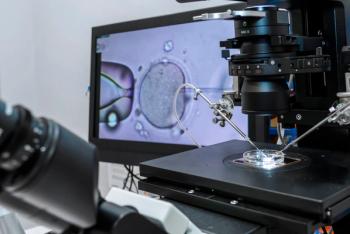
An Introduction to Polycystic Ovary Syndrome
What exactly is Polycystic Ovary Syndrome? Physicians are taught that the syndrome is best described as "hyperandrogenic anovulation."
Dear Friends and Colleagues,
On behalf of our terrific
What exactly is Polycystic Ovary Syndrome? Physicians are taught that the syndrome is best described as "hyperandrogenic anovulation." Let's dissect that definition. "Hyperandrogenic" refers to elevated amounts of a group of hormones called androgens. Androgens are typically thought of as hormones made by males. But all women produce androgens also. In fact, women need to produce androgen hormones, since there is only one enzyme step separating androgen hormones from the ultimate production of estrogen hormones ("female" hormones).
Women with PCOS tend to have ovaries that produce mildly increased amounts of androgens. In women, though, even slightly elevated levels of androgens can cause the ovaries to stop producing mature follicles, the small cystic incubators for developing eggs. Each month, follicles try to grow in a normal fashion, but become arrested in their growth if exposed to inappropriate amounts of androgens. Over longer periods of time, the underdeveloped follicles build up in the ovary, leading to a polycystic appearance. The vicious cycle of "hyperandrogenism" and "anovulation" (lack of ovulation) tends to worsen over time.
More recently, it has been determined that PCOS may be caused by a combination of environmental and genetic influences. Whether or not there are specific gene defects causing PCOS is a subject of considerable research and debate. Likewise, many believe that metabolism and insulin production predispose many women to the development of PCOS. Certain strategies aimed at lowering insulin production seem to help many women with the syndrome. Research is actively ongoing in this arena.
Women with long-standing PCOS are at significant risk for infertility, irregular and heavy uterine bleeding, pre-cancerous and cancerous changes within the uterus, excessive hair growth, acne, diabetes, lipid abnormalities, and possibly coronary heart disease. The syndrome can affect adolescents, women of childbearing age, and post-menopausal women. Women of virtually all ethnic backgrounds can be affected, arguing against a single gene abnormality. The syndrome does tend to run in families, however, suggesting a hereditary pre-disposition.
The Editorial Advisory Board hopes that you will find the presented information and dialog useful. We all are available by electronic communication for your feedback and constructive comments.
Warm regards
References:
Ronald F. Feinberg M.D., Ph.D.
Chairman, OBGYN.net PCOS Pavilion Editorial Advisory Board
Newsletter
Get the latest clinical updates, case studies, and expert commentary in obstetric and gynecologic care. Sign up now to stay informed.
















